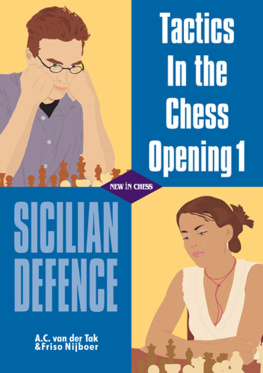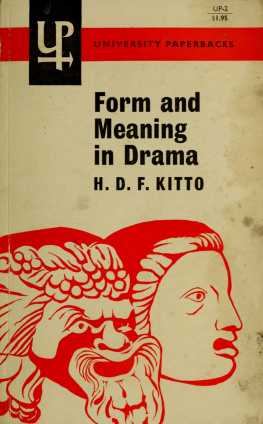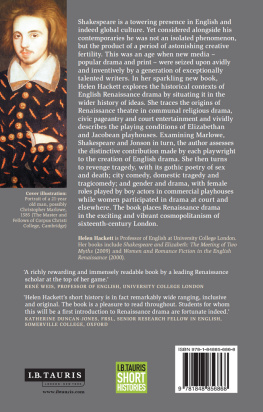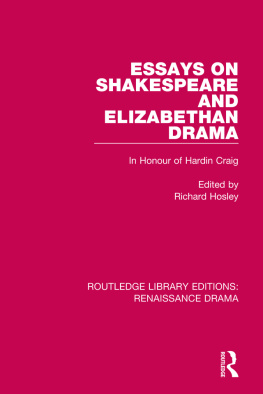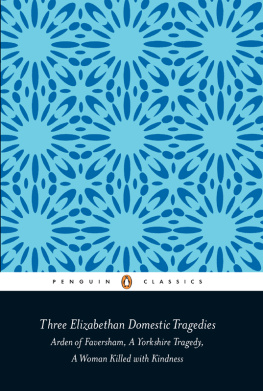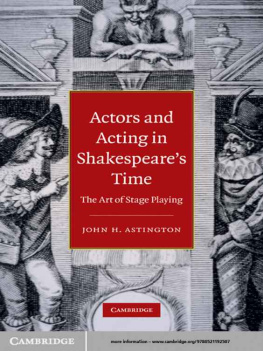Contents

First published in 1962 by Methuen & Co. Ltd, reprinted 1979
This edition first published in 2017
by Routledge
2 Park Square, Milton Park, Abingdon, Oxon OX14 4RN
and by Routledge
711 Third Avenue, New York, NY 10017
Routledge is an imprint of the Taylor & Francis Group, an informa business
1962 The Estate of Irving Ribner
All rights reserved. No part of this book may be reprinted or reproduced or utilised in any form or by any electronic, mechanical, or other means, now known or hereafter invented, including photocopying and recording, or in any information storage or retrieval system, without permission in writing from the publishers.
Trademark notice: Product or corporate names may be trademarks or registered trademarks, and are used only for identification and explanation without intent to infringe.
British Library Cataloguing in Publication Data
A catalogue record for this book is available from the British Library
ISBN: 978-1-138-71372-7 (Set)
ISBN: 978-1-315-19807-1 (Set) (ebk)
ISBN: 978-1-138-23647-9 (Volume 12) (hbk)
ISBN: 978-1-138-23648-6 (Volume 12) (pbk)
ISBN: 978-1-315-30215-7 (Volume 12) (ebk)
Publishers Note
The publisher has gone to great lengths to ensure the quality of this reprint but points out that some imperfections in the original copies may be apparent.
Disclaimer
The publisher has made every effort to trace copyright holders and would welcome correspondence from those they have been unable to trace.
First published 1962
This edition reprinted 1979
by Methuen & Co. Ltd
II New Fetter Lane, London EC4P 4EE
ISBN 0 416 72500 7
and
Rowman and Littlefield
81 Adams Drive
Totowa, New Jersey 07512
ISBN 0 8476 6179 2
The Estate of Irving Ribner 1962
Printed in Great Britain by
Whitstable Litho Ltd, Whitstable, Kent
All rights reserved.
No part of this book
may be reprinted or reproduced
or utilised in any
form or by any electronic,
mechanical or other means, now
known or hereafter invented, including
photocopying and recording,
or in any information storage
or retrieval system, without
permission in writing
from the publishers.
British Library Cataloguing in Publication Data
Ribner, Irving
Jacobean tragedy.(Methuen library reprints).
1. English drama (Tragedy)History and criticism
2. English drama l7th century History and criticism
3. English drama Early modern and Elizabethan,
1500-1600 History and criticism
1. Title
822.051 PR658.T7
ISBN 0-416-72500-7
For only by breasting in full the storm and cloud of life, breasting it and passing through it and above it, can the dramatist who feels the weight of mortal things liberate himself from the pressure, and rise, as we all seek to rise, to content and joy.
MATTHEW ARNOLD
FOR
CLIFFORD AND JONATHAN
Contents
I n Patterns in Shakespearian Tragedy I suggested that to be truly great tragedy must spring from the artists moral concern, his need to come to terms with the fact of evil in the world, and out of his exploration of disaster to arrive at some comprehensive vision of the relation of human suffering to human joy. I suggested also that the great ages of tragedy have been those in which an established system of values was being challenged by a new scepticism, and that Shakespeare was able to effect his tragic reconciliation by affirming in poetic terms the validity of his ages Christian humanism. His tragedies lead to a sense of order, justice and divine purpose in the universe.
I propose in the following pages to explore the manner in which Shakespeares fellow dramatists, each in his own way, met the same challenge of a growing Jacobean scepticism and disenchantment with traditional values. The writers of tragedy I have chosen to consider are those who I believe most seriously attempted the kind of resolution of the problem of mankinds relation to the forces of evil in the world at which Shakespeare aimed. None succeeded in the same way, but the tragedies they wrote are all conditioned by this quest for moral order, and when they are examined in these terms they reveal new dimensions. This does not imply that they may not be studied with profit in other ways.
Like all who venture to write in this area, I have been profoundly indebted to the late Professor Una M. Ellis-Fermors Jacobean Drama, and the reader will perceive also that I have been strongly influenced by Miss M. C. Bradbrooks Themes and Conventions of Elizabethan Tragedy and Professor F. P. Wilsons Elizabethan and Jacobean. When my work was in final draft, The Moral Vision of Jacobean Tragedy by Robert Ornstein was published by the University of Wisconsin Press. Although Professor Ornstein and I approach the subject through different avenues and with different premisses and come usually to quite different conclusions, we are both concerned with the moral value of Jacobean tragedy. I regret that I did not see his work in time to make more use of it, but I have tried to indicate in my notes some of our areas of agreement and, more often, disagreement.
For my references to specific plays it has been difficult to find texts of a uniform reliability. I have been able to use the excellent Revels Plays editions under the general editorship of Professor Clifford Leech for The Changeling (ed. N. W. Bawcutt, London, 1958) and The White Devil (ed. J. R. Brown, London, 1960). For Middletons Women Beware Women I have used the edition by A. H. Bullen (London, 1885), and for the plays of George Chapman I have relied upon the editions of the late T. M. Parrott (London, 1910 and 1914). For The Duchess of Malfi I have modernized the spelling of F. L. Lucass 1958 edition, based upon his own 1927 monumental edition of Websters complete plays. For A Woman Killed With Kindness I have used the Mermaid edition by A. Wilson Verity (London, 1888), and for The Rape of Lucrece I have modernized the edition by Allan Holaday (Urbana, 111., 1950). For the Cyril Tourneur plays I have modernized the text of Allardyce Nicoll (London, 1929), and for the John Ford plays that of Henry de Vocht (Louvain, 1927). To facilitate reference, I have retained the line numberings of the particular editions I have used. I am grateful to the editors of ELH, Modern language Review, The Tulane Drama Review and Tulane Studies in English for permission to reprint some portions of the book which were printed in more tentative form while the work was in progress.
The earliest portions of this book in time of composition were read to a highly critical group of undergraduates in Miss Enid Welsfords sitting-room in Cambridge in the Spring of 1959. For the comments of all my listeners, and particularly those of Miss Welsford, I have continued to be grateful.
CHAPTER ONE
Introduction
T he most important writer of tragedy in the Jacobean era, of course, is William Shakespeare. Not only do such plays as Othello, Lear, Macbeth represent the highest reaches tragedy has attained in any age by the perfection with which they mirror a vision of mans relation to his universe, but the plays of Shakespeare served also as models for his Jacobean contemporaries to emulate. Beaumont and Fletcher, Heywood, Webster and Ford all reveal the influence of their master. But Shakespeare, while he taught his contemporary dramatists much of their craft, is still not one of them. While they imitate his language and ape his situations, the writers of tragedy in the early years of the seventeenth century generally find it difficult to accept without question the view of mans position in the universe which gives to Shakespeares greatest tragedies their most significant form.


